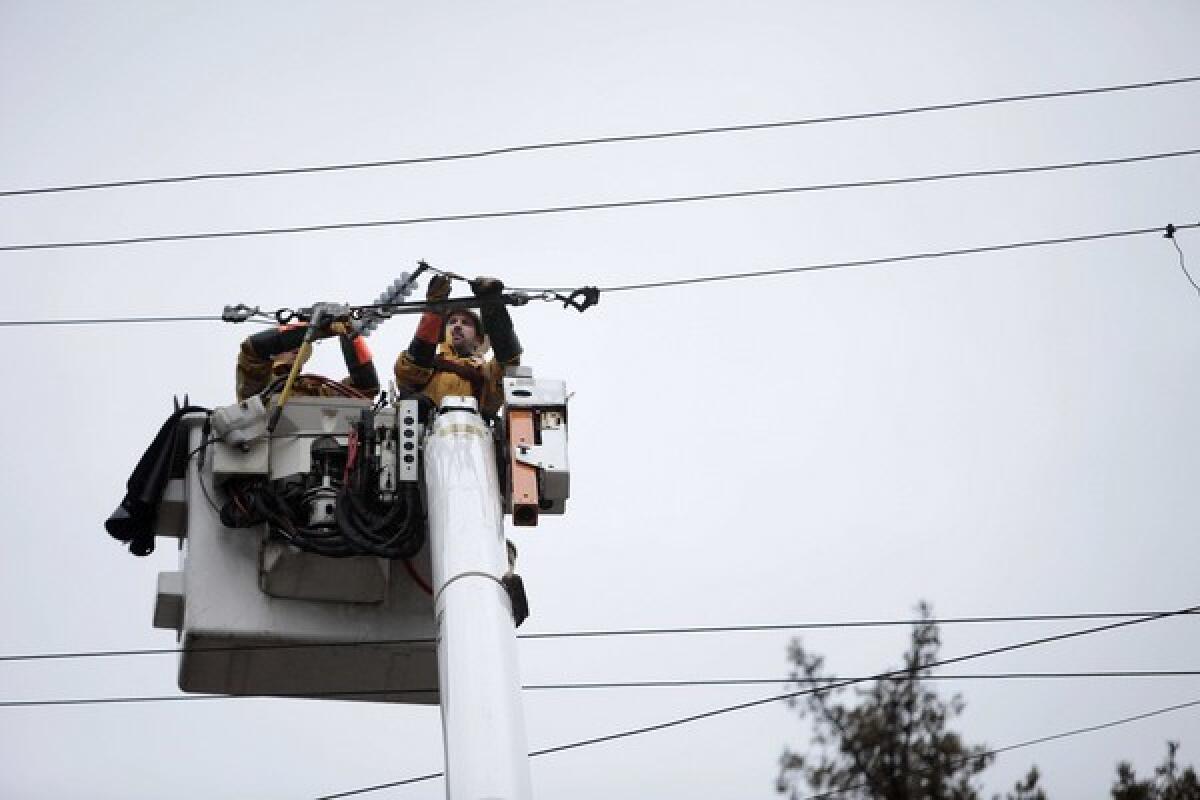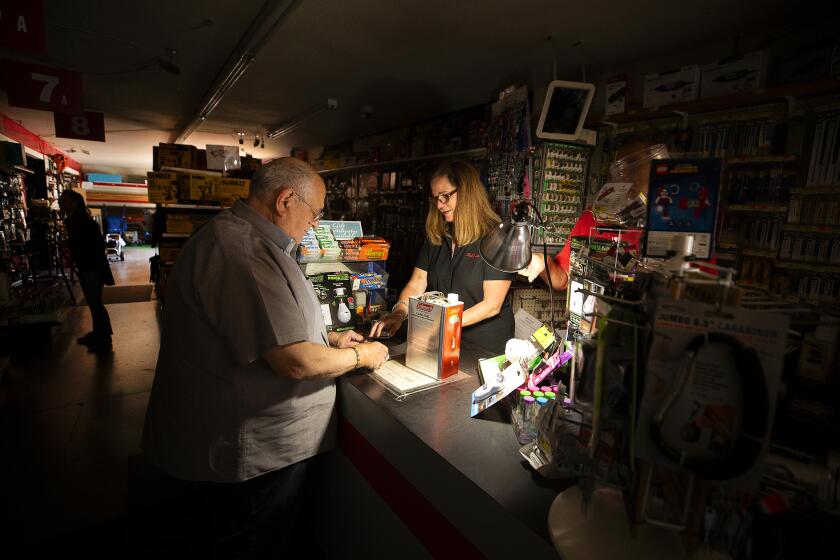Is your power being shut off? Here’s how you can prepare

- Share via
Millions of Californians were without power Wednesday as utilities across the state began proactively shutting down parts of the electrical grid in an effort to avoid fires sparked by high winds.
In Northern California, 800,000 customers of Pacific Gas & Electric were facing widespread outages affecting 34 counties. More than a million residents lost power beginning at midnight, with additional blackouts expected throughout the day as critical fire weather continued.
Southern California Edison announced it also was considering preventive power outages. The utility said that given the strong Santa Ana winds forecast for the area, power could be cut off to more than 173,000 customers in parts of eight Southland counties.
Millions of Californians could spend days without power as the state’s largest utility continues shutting off electricity in a desperate attempt to avoid wildfires sparked by windblown power lines.
The outage could affect customers in Los Angeles, San Bernardino and Riverside counties, as well as areas in Ventura, Kern, Tulare, Inyo and Mono counties.
Although utilities have shut off power to avoid fire dangers before, the massive outage is an unprecedented move, given the large number of customers who will be left in the dark.
If you are in one of the areas expected to lose power, here’s what you can do to prepare, according to the American Red Cross.
Before an outage
Have a plan
The Red Cross recommends creating an evacuation plan for your home and having an emergency preparedness kit for any situation — including unexpected power outages. Your kit should include:
- A gallon of water per day per person,
- Enough food for two weeks
- A flashlight
- A hand crank- or battery-powered radio
- A first aid kit
- Emergency contact information
- A map of your area
Extra cash will come in handy too, since credit card processing equipment and ATMs won’t function during a power outage, said Cynthia Shaw, a Red Cross spokeswoman.
Residents also should know how to manually open garage doors so they can quickly exit their home if necessary, she said. Street lights won’t be working, so be aware of potential delays because of dark roads.
Keep coolers and ice on -hand
Inexpensive foam coolers will help keep food from spoiling during an outage. Surround perishables with ice in a cooler or the refrigerator to help food stay cold longer.
Fill up your gas tank
Have at least half a tank of gas in your car, and if you can, fill extra containers with gas. Without power, gas stations will have limited service and supplies.
During an outage
Turn off and unplug electronics
Turn off all unnecessary electronics. Appliances and other electronics that were in use when the power went out should be disconnected. Surges in power after the electricity is turned back on can damage your equipment.
The Red Cross suggests leaving one light on so you know when the power returns. You also can purchase a generator to power critical equipment, but make sure you know how to use it safely.
Don’t use candles
Using candles during a power outage may be tempting, but they are a fire hazard, Shaw said.
“People could tip the candles and start a fire in their homes,” she said. “With the winds, that fire could spread to multiple homes very quickly.”
Instead, carry flashlights and make sure to have extra batteries.
Keep your refrigerator doors closed
Without power, an unopened refrigerator can keep food cold for up to four hours, according to the Red Cross. A full freezer can keep its temperature for 48 hours, if the door stays closed.
Perishable food should have a temperature of 40 degrees Fahrenheit or lower to be safe to eat.
If possible, keep food in a dry, cool spot.
Here’s what experts say are the best ways to communicate during and after an emergency.
After an outage
Throw away bad food
Perishables that were exposed to temperatures higher than 40 degrees for two or more hours should be thrown out, especially meat, fish, eggs and leftovers. Using a thermometer to determine whether food is safe is recommended.
According to the Red Cross, if your freezer food is colder than 40 degrees and has ice crystals on it, you can refreeze it.
Stay away from downed power lines
Winds can cause power lines to fall or become damaged by trees, Shaw said. If power lines are down, stay away and report them to your utility.
More to Read
Sign up for Essential California
The most important California stories and recommendations in your inbox every morning.
You may occasionally receive promotional content from the Los Angeles Times.
















